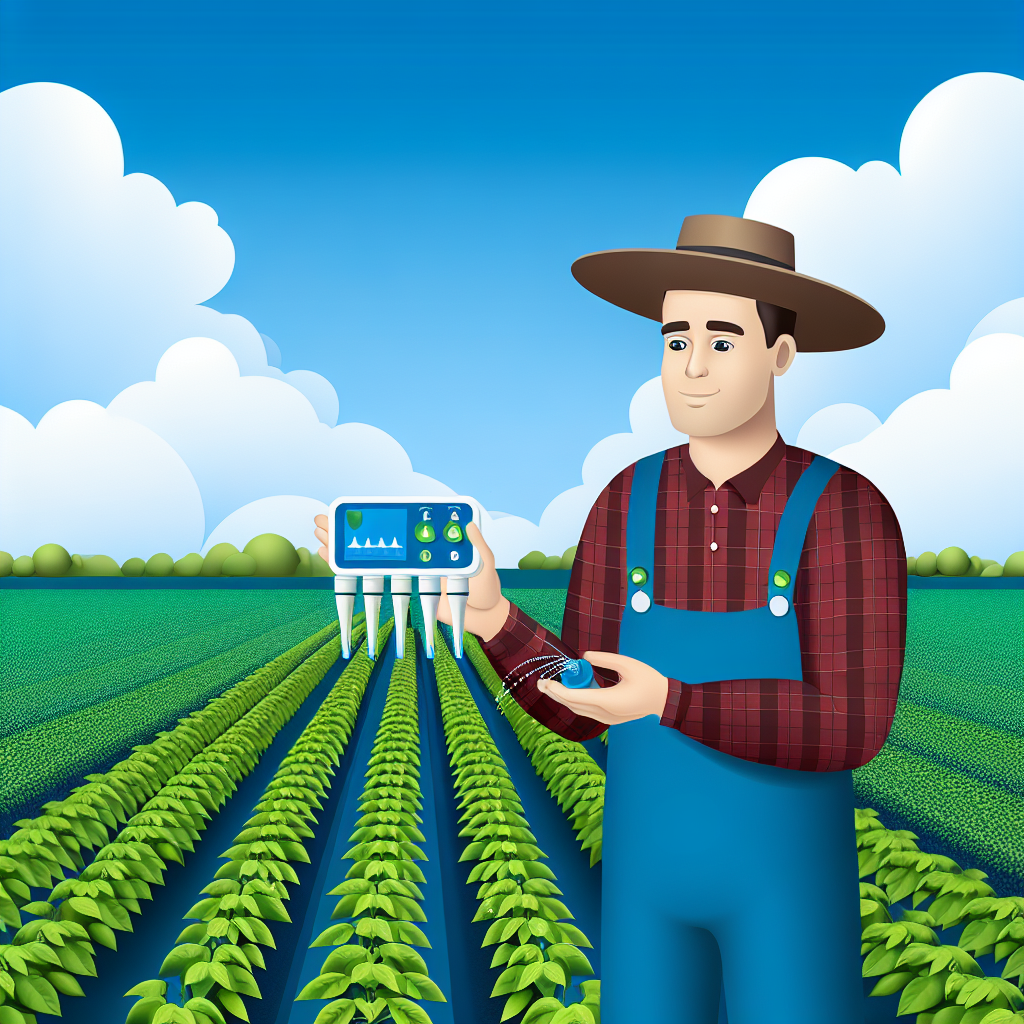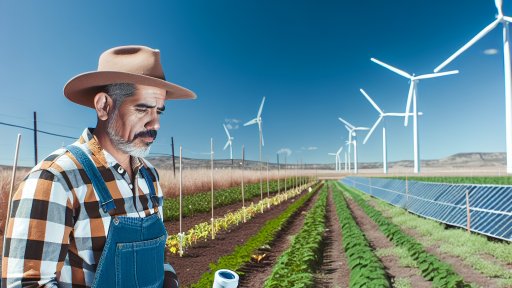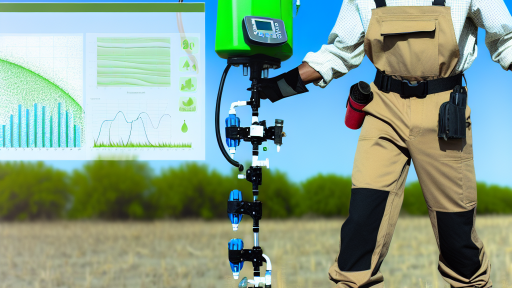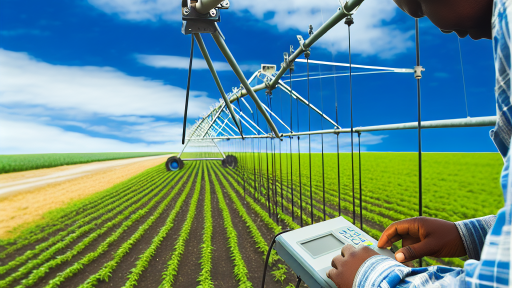Introduction to Sustainable Farming and Water Conservation
Defining Sustainable Farming
Sustainable farming focuses on producing food while conserving resources.
It aims to maintain ecological balance and promote biodiversity.
Farmers implement practices that enhance soil health and minimize pollution.
The Importance of Water Conservation
Water scarcity is a pressing global issue that affects agriculture.
Efficient water usage is essential for sustainable farming practices.
Conserving water helps to protect local ecosystems and agricultural productivity.
Effective Water Usage Strategies
Farmers can adopt various techniques to reduce water consumption.
Drip irrigation delivers water directly to plant roots.
This method minimizes evaporation and runoff issues.
Rainwater harvesting is another effective strategy.
This technique captures and stores rainwater for agricultural use.
It reduces dependency on groundwater and municipal water supplies.
Innovative Technologies in Water Conservation
Technology plays a crucial role in enhancing water conservation efforts.
Soil moisture sensors provide real-time data for informed irrigation decisions.
These tools help farmers optimize their water usage significantly.
Transform Your Agribusiness
Unlock your farm's potential with expert advice tailored to your needs. Get actionable steps that drive real results.
Get StartedAdditionally, precision farming techniques promote efficient resource management.
Farmers can target specific areas of their fields to apply the necessary water.
This minimizes waste and improves crop yields.
The Role of Education and Training
Educating farmers about sustainable methods is vital.
Workshops and training programs can facilitate knowledge sharing.
Furthermore, collaboration with agricultural experts can enhance outcomes.
These initiatives empower farmers to adopt efficient practices.
Implications of Sustainable Water Usage
Adopting sustainable farming methods is essential for future food security.
By prioritizing water conservation, farmers can support healthier ecosystems.
Ultimately, sustainable practices lead to resilient agricultural communities.
The Importance of Reducing Water Usage in Agriculture
Impact on Resources
Agriculture significantly consumes global freshwater resources.
This demand leads to water scarcity in many regions.
As a result, farmers must improve their water usage.
Environmental Consequences
Inefficient water use negatively impacts ecosystems.
Over-extraction can harm local wildlife habitats.
Moreover, polluted runoff from farms can contaminate water sources.
Economic Benefits
Reducing water usage cuts costs for farmers.
Efficient water management increases crop yields.
This also leads to higher profitability for agricultural operations.
Adaptation to Climate Change
Climate change alters weather patterns and water availability.
Farmers need to adapt to these changes for sustainability.
Implementing water-efficient practices is crucial for resilience.
Innovation in Water Management
Technology plays a vital role in reducing water use.
Advanced irrigation systems enhance water efficiency.
Showcase Your Farming Business
Publish your professional farming services profile on our blog for a one-time fee of $200 and reach a dedicated audience of farmers and agribusiness owners.
Publish Your ProfileAdditionally, precision agriculture optimizes resource management.
Overview of Water-Saving Techniques in Sustainable Farming
Drip Irrigation
Drip irrigation delivers water directly to the plant roots.
This method minimizes evaporation and runoff.
Using drip lines can save significant amounts of water.
Farmers report healthier plants and reduced water bills.
Rainwater Harvesting
Rainwater harvesting captures and stores rainwater for irrigation.
It reduces reliance on municipal water supplies.
Farmers can design effective systems to maximize collection.
Additionally, this practice promotes water conservation.
Soil Moisture Management
Soil moisture management involves monitoring soil conditions accurately.
Using sensors helps farmers determine when to irrigate.
This practice ensures efficient water use throughout the growing season.
Moreover, it prevents overwatering, which can harm crops.
Cover Cropping
Cover cropping involves planting crops that protect and enrich the soil.
These crops help retain moisture and prevent erosion.
Additionally, they promote soil health and enhance biodiversity.
Farmers find that cover crops improve water retention significantly.
Mulching Techniques
Mulching helps reduce water evaporation from the soil surface.
Various materials can be used for effective mulching.
Grass clippings, straw, and wood chips work well.
This technique also suppresses weeds and improves soil quality.
Efficient Crop Selection
Selecting drought-resistant crops can significantly reduce water needs.
Farmers should choose varieties that thrive in local conditions.
This practice leads to sustainable agricultural practices.
Ultimately, it helps ensure long-term profitability and resource conservation.
Uncover the Details: Sustainable Farming Practices for Climate Resilience
Drip Irrigation: Efficient Water Delivery Systems
What is Drip Irrigation?
Drip irrigation is a method that delivers water directly to plants’ roots.
It uses a system of tubes, pipes, and emitters to achieve this.
This technique minimizes water loss due to evaporation and runoff.
Benefits of Drip Irrigation
One major advantage is its efficiency in water usage.
Studies show that drip irrigation can reduce water usage by up to 60%.
Additionally, it promotes healthier plant growth.
By providing a consistent moisture level, it decreases plant stress.
Furthermore, it helps in reducing weed growth.
This is because the surrounding areas remain drier.
Installation Considerations
When installing a drip irrigation system, planning is essential.
First, assess the layout of your garden or farm.
Next, determine the type of plants you will irrigate.
Choose the appropriate emitter size for your needs.
Finally, consider the water source and pressure available.
Showcase Your Farming Business
Publish your professional farming services profile on our blog for a one-time fee of $200 and reach a dedicated audience of farmers and agribusiness owners.
Publish Your ProfileMaintenance and System Monitoring
Regular maintenance helps ensure the system functions effectively.
Check for clogs in the emitters frequently.
Flush the system at least once a season to clear debris.
Moreover, monitor water pressure to avoid over or under-watering.
Cost-Effectiveness
Though initial installation costs may be high, the long-term savings are significant.
Reduced water bills help offset the initial investment.
Moreover, healthier crops can lead to better yields and profits.
As a result, many farmers are adopting this technology.
Case Studies and Success Stories
Many farms worldwide have successfully implemented drip irrigation.
In California, farmers reduced water usage by 50% using this technique.
Similarly, a vineyard in Australia reported increased yield with less water.
These examples highlight the effectiveness of drip irrigation systems.
Delve into the Subject: Carbon Sequestration Strategies for Sustainable Farms
Rainwater Harvesting: Utilizing Natural Resources
Benefits of Rainwater Harvesting
Harvesting rainwater significantly reduces dependency on conventional water sources.
It helps conserve the environment by decreasing runoff and erosion.
Moreover, rainwater is usually free of harmful chemicals present in treated water.
This method encourages sustainable practices in agriculture and gardening.
Techniques for Collecting Rainwater
Farmers can implement various techniques to collect rainwater efficiently.
Gutters and downspouts can direct rainwater from roofs into storage tanks.
Additionally, surface runoff can be collected in ponds or reservoirs.
Using permeable surfaces increases the natural absorption of rainwater.
Rainwater Storage Solutions
Proper storage is essential for effective rainwater harvesting.
Choose tanks made from materials such as plastic, concrete, or metal.
Ensure the storage system is covered to prevent contamination.
Regular maintenance is crucial for the longevity of the storage solution.
Implementing Rainwater Harvesting in Farming
Farmers should assess their land’s capacity for rainwater harvesting.
They can begin by conducting a water audit to evaluate needs.
Creating a design plan tailored to the unique landscape is vital.
Furthermore, integrating rainwater systems with irrigation methods enhances efficiency.
Community Impact
Community efforts in rainwater harvesting can foster collaboration.
Working together, neighboring farms can share resources and knowledge.
This collaboration amplifies the benefits of water conservation.
Ultimately, it strengthens community resilience against water shortages.
Find Out More: Climate-Smart Soil Management Techniques Explained
Soil Management Practices for Enhanced Water Retention
Importance of Soil Structure
Soi structure significantly influences water retention.
Well-structured soil allows water to infiltrate easily.
This process helps reduce runoff and erosion.
Moreover, it enhances the availability of water to plants.
Utilizing Cover Crops
Cover crops play a crucial role in soil management.
They protect the soil from erosion during off-seasons.
Showcase Your Farming Business
Publish your professional farming services profile on our blog for a one-time fee of $200 and reach a dedicated audience of farmers and agribusiness owners.
Publish Your ProfileAdditionally, cover crops improve soil organic matter.
This organic matter enhances the soil’s water-holding capacity.
Implementing Mulching Techniques
Mulching is another effective practice for water retention.
Organic mulch helps reduce moisture evaporation from the soil.
It also regulates soil temperature, providing a stable environment.
Furthermore, mulch suppresses weed growth, competing for water.
Application of Biochar
Biochar is gaining recognition for water retention benefits.
This amendment improves soil aeration and drainage.
It also enhances the soil’s ability to retain nutrients.
By doing so, biochar contributes to better water management.
Practicing No-Till Farming
No-till farming enhances soil moisture retention.
This technique minimizes soil disturbance, preserving structure.
Consequently, it promotes beneficial microbial activity in the soil.
These practices create a healthier environment for crops.
Incorporating Crop Rotation
Crop rotation contributes to improved soil health.
Diverse root systems enhance soil structure and moisture retention.
Additionally, rotating crops helps control pests and diseases.
As a result, it boosts overall crop productivity and sustainability.
See Related Content: Sustainable Irrigation Techniques for Flood-Prone Areas

Crop Selection: Choosing Drought-Resistant Varieties
Importance of Drought-Resistant Crops
Drought-resistant crops significantly reduce water usage in agriculture.
They thrive in dry conditions, ensuring healthier yields in arid regions.
Additionally, these crops help maintain food security during droughts.
Examples of Drought-Resistant Varieties
Many crops exhibit drought-resistant traits.
- Sorghum adapts well to dry climates and requires minimal water.
- Millets are hardy and can flourish in poor soils.
- Certain beans, like Tepary beans, withstand extended dry periods.
- Quinoa offers nutritional benefits while thriving in arid conditions.
Strategies for Implementing Drought-Resistant Varieties
Farmers should start by assessing local soil and water conditions.
This assessment helps identify the most suitable crop varieties.
Subsequently, farmers can incorporate crop rotation to enhance soil health.
Moreover, intercropping drought-resistant varieties can increase resilience.
Finally, educating farmers about these varieties promotes wider adoption.
Evaluation of Crop Performance
Monitoring drought-resistant crops is essential for optimizing yields.
This includes assessing growth rates and water consumption.
Farmers should also adapt practices based on weather conditions.
By gathering data, they can improve future planting strategies.
Technology in Farming: Sensors and Smart Irrigation Systems
Introduction to Smart Irrigation
Smart irrigation revolutionizes traditional farming practices.
This technology helps farmers optimize water usage.
Furthermore, it minimizes waste and maximizes efficiency.
Benefits of Sensors in Farming
Sensors play a crucial role in modern agriculture.
They provide real-time data on soil moisture levels.
Additionally, they can monitor weather conditions.
This information allows for precise irrigation scheduling.
Consequently, farmers can apply water only when necessary.
Showcase Your Farming Business
Publish your professional farming services profile on our blog for a one-time fee of $200 and reach a dedicated audience of farmers and agribusiness owners.
Publish Your ProfileTypes of Smart Irrigation Systems
- Drip irrigation delivers water directly to plant roots.
- Sprinkler systems can adjust based on weather data.
- Soil moisture sensors trigger watering based on need.
Each type of system offers unique advantages for sustainability.
Innovations in Technology
Recent innovations include automated irrigation controls.
These systems can integrate with weather predictions.
As a result, they reduce water usage during rainfall.
Case Studies in Efficient Water Usage
Farmers worldwide implement these technologies with success.
Diana Farms in California saved 30% of their water usage.
This was achieved through advanced sensor technology.
Similarly, Green Fields in Texas improved yield by 20% with smart systems.
Future Trends in Smart Irrigation
The future of irrigation technology looks promising.
Improvements in AI and machine learning will enhance systems.
Moreover, farmers will have better tools for decision-making.
Consequently, water conservation efforts will continue to grow.
Case Studies: Successful Implementation of Water Reduction Strategies
Innovative Irrigation Techniques
Farmers in the Central Valley of California adopted drip irrigation systems.
This method minimizes water waste significantly compared to traditional irrigation.
As a result, crop yields increased while water usage decreased by 30%.
Regenerative Agricultural Practices
A farm in Oregon implemented cover cropping to improve soil health.
Cover crops increased soil moisture retention during dry seasons.
This technique allowed the farm to utilize less water for its vineyards.
Rainwater Harvesting Systems
In Arizona, a community farm constructed rainwater harvesting systems.
This system captures and stores rain to use during dry periods.
Consequently, the farm reduced its reliance on groundwater sources.
Soil Moisture Monitoring Technologies
Farmers in Texas began using soil moisture sensors to optimize irrigation schedules.
These sensors provide real-time data on soil conditions.
As a result, farmers watered crops only when necessary, reducing overall water use.
Crop Selection and Rotation
A sustainable farm in Iowa switched to drought-resistant crop varieties.
This change decreased water requirements and improved resilience to dry conditions.
Additionally, rotating crops helped maintain soil health and moisture levels.
Additional Resources
11 Ways Farmers Are Adapting to Climate Change | Earth.Org
Farmers Employ Strategies To Reduce Risk of Drought … – USDA ERS




